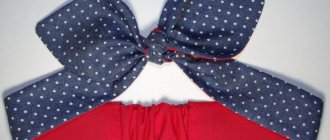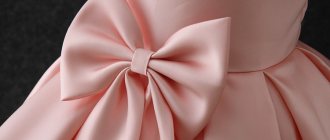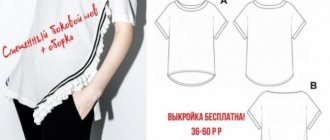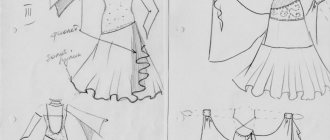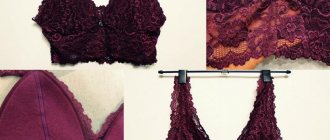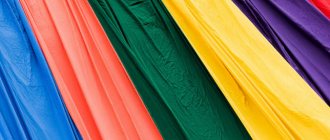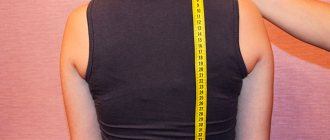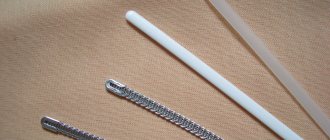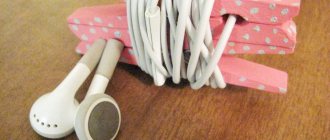A detailed pattern with dimensions for sewing a comfortable and beautiful shopping bag from fabric will help you make an original accessory with your own hands. Step-by-step instructions for work will simplify the task as much as possible.
Tools and materials
These eco-bags can be made from different materials. The choice of fabric depends on the purpose of the product. In summer, it is better to use natural varieties, such as linen or cotton. A shopper made of synthetic fabric will be universal, and laminated models are comfortable in the rain.
There are also exclusive options made from unusual materials, for example, a handbag made with your own hands from genuine leather or fur is suitable for an evening walk, party, or going out.
Suitable fabrics for sewing shopping bags with your own hands:
- laminated fabric;
- synthetics;
- jeans;
- suede leather;
- leather;
- cotton;
- linen;
- fur.
What you will need to work on a rag bag with embroidery:
- dense fabric – 1x1 m;
- lining material – 0.5-0.9 m;
- non-woven fabric – 0.85x0.2 m;
- cotton or wool floss;
- threads matching the color of the main fabric;
- hoop;
- water-soluble marker;
- needles;
- scissors;
- ruler;
- sewing machine.
You can choose various decorations for the bag. Fabric products are most often decorated with embroidery with threads, ribbons or beads. A toy keychain made of the same material will add originality to a fur bag.
A leather product can be decorated with metal clips or nameplates. There are unusual bags decorated with buttons, beads, rhinestones, bows, and elements made using the macrame technique.
Installation of accessories
To hide all the shortcomings that arose during sewing, or simply decorate the bag, install accessories. These can be buttons, sequins, snaps, etc.
If you don’t know how best to place the details, then you can look at photos of hand-sewn bags and use ready-made ideas.
Metal parts look best on leather products (you will need glue to secure them).
Pattern
Shoppers are designed for shopping, which determined the peculiarities of their appearance. There is no clasp, the shape is straight and roomy. In addition to small handles, there may be a long strap. Some models are equipped with a small pocket on the inside for storing small items.
The pattern for sewing a shopper bag with your own hands can be of any size. Depending on the required parameters, the consumption of materials depends. The traditional option is a large, roomy model, but not everyone will be comfortable walking with one. Therefore, you can choose different sizes and shapes.
First you need to cut out the rectangular parts:
- made of thick fabric: 2 pieces. 42.5x38 cm, 2 children. 62x7 cm, 1 child. 82x5 cm;
- for lining: 2 pieces. 42.5x38 cm;
- made of fizelin: 82x5 cm.
It is important to choose the length of the handle that is comfortable for you. The shopper replaces the shopping bag, so he is often loaded with purchases.
The bag should not be too long and drag on the floor. At the same time, it is desirable to be able to hang it on your shoulder.
Skin selection
There are several factors that women rely on when choosing material:
- price;
- personal preferences;
- quality of material and selected bag model.
The most suitable is calfskin. It has a soft texture and is famous for its quality.
Suede is a material that is soft and elastic. This bag will look very elegant.
Buffalo (ox) leather has a durable texture, so the product will last a long time. This material is well suited for travel bags.
A budget option would be to purchase leatherette. It is inferior in quality to natural materials. But modern technologies are so developed that only a specialist can distinguish materials by appearance.
- DIY dress - step-by-step instructions on how to sew a dress. Design of modern models and sewing technology (95 photos)
DIY swimsuit - how and from what to sew a stylish and modern women’s or children’s swimsuit (105 photos)
- How to sew a sundress with your own hands - the best patterns and a master class on sewing a stylish and modern sundress (95 photos)
The advantage of leatherette is the color palette that natural leather cannot boast of.
A women's bag made of genuine leather always looks expensive and gives the owner status. The service life is longer than that of leatherette, since their surface does not deteriorate due to temperature changes.
Step-by-step instruction
MK, how to sew a shopper bag with your own hands:
- cut out the details;
- decorate with decor;
- hem the lining and connect all the elements;
- sew handles, form the bottom, seal the top;
- cut off any protruding threads.
Uncover
Using a marker, draw rectangles on the material according to the specified dimensions. Then you need to cut them out with sharp scissors. It is not necessary to use tracing paper or paper, since the parts are simple, you can immediately build them on the fabric.
Embroidery
The easiest way to decorate a bag is to embroider a design on it using floss threads. The template can be downloaded from the Internet, printed on a printer, then cut out and transferred to fabric with a marker. It is better to draw thin elements with a gel pen.
Use a hoop to do embroidery. To do this, use a special needle and floss to follow the marked lines using simple stitches. You can complicate the decor using satin ribbons, beads or complex embroidery techniques. The main thing is that all protruding threads remain on the wrong side.
Before use, it is advisable to check whether the materials are fading. To do this, simply wash them with your hands in warm water.
It is better to arrange a small test drive in advance than to completely ruin the finished bag with faded threads.
Connecting the base with the lining
Sequencing:
- Align the rectangles of thick and lining fabrics with the wrong sides facing each other.
- Sweep away the center and perimeter. This is necessary to ensure that the elements do not move during sewing.
- Place the blanks together so that the front sides of the bag remain on the outside.
- Leave 0.5 cm from the edges and machine stitch along the sides and bottom.
- Turn it inside out, retreat another 1 cm along the edges, and machine stitch it.
- You need to stitch the corners from the bottom to form the bottom. You should get triangles with sides 6 cm.
- Fold the triangles to the bottom and sew them by hand.
We strengthen and sew the handles
Non-woven fabric is used to strengthen the upper part of the shopper and handles.
The parts for the handles need to smooth out the allowances to form the seams. It is enough to bend 0.5 cm on each side. Insert the non-woven base, sew the blanks lengthwise on both sides.
Step back 9 cm from the top edge and baste handles. Attach the reinforcing facing to the top, placing it right side to the main fabric. Sew everything to the bag using a sewing machine. It is advisable to walk where the handles are attached several times so that the finished bag can withstand a lot of weight.
Straighten the facing, fold in the seam allowance, and sew the edge to the wrong side of the bag. It is also recommended to stitch the top of the facing.
We remove everything unnecessary
At the final stage, you need to remove all basting threads. If desired, you can add hardware for decoration or to connect the top of the bag.
The main thing is not to overload the resulting product.
At the end, the shopper needs to be washed. It is best to do this by hand in warm water with a synthetic detergent. Then rinse thoroughly, wring out and hang to dry.
Depending on the fabric used, the dry bag will need to be ironed. But some materials just need to be hung evenly when drying.
You can sew an unusual, beautiful, roomy shopper bag with your own hands without any special skills. Step-by-step instructions and a ready-made pattern will help even a novice seamstress cope with this.
How to sew a shopping bag
When all the elements are ready and cut out and paper, proceed to the following:
- Place each piece of paper on a straightened fabric and trace it with chalk, leaving a few millimeters for error.
- After removing the paper, cut everything carefully along the contour.
- Observing the appropriate temperature conditions, iron each part from the wrong side.
